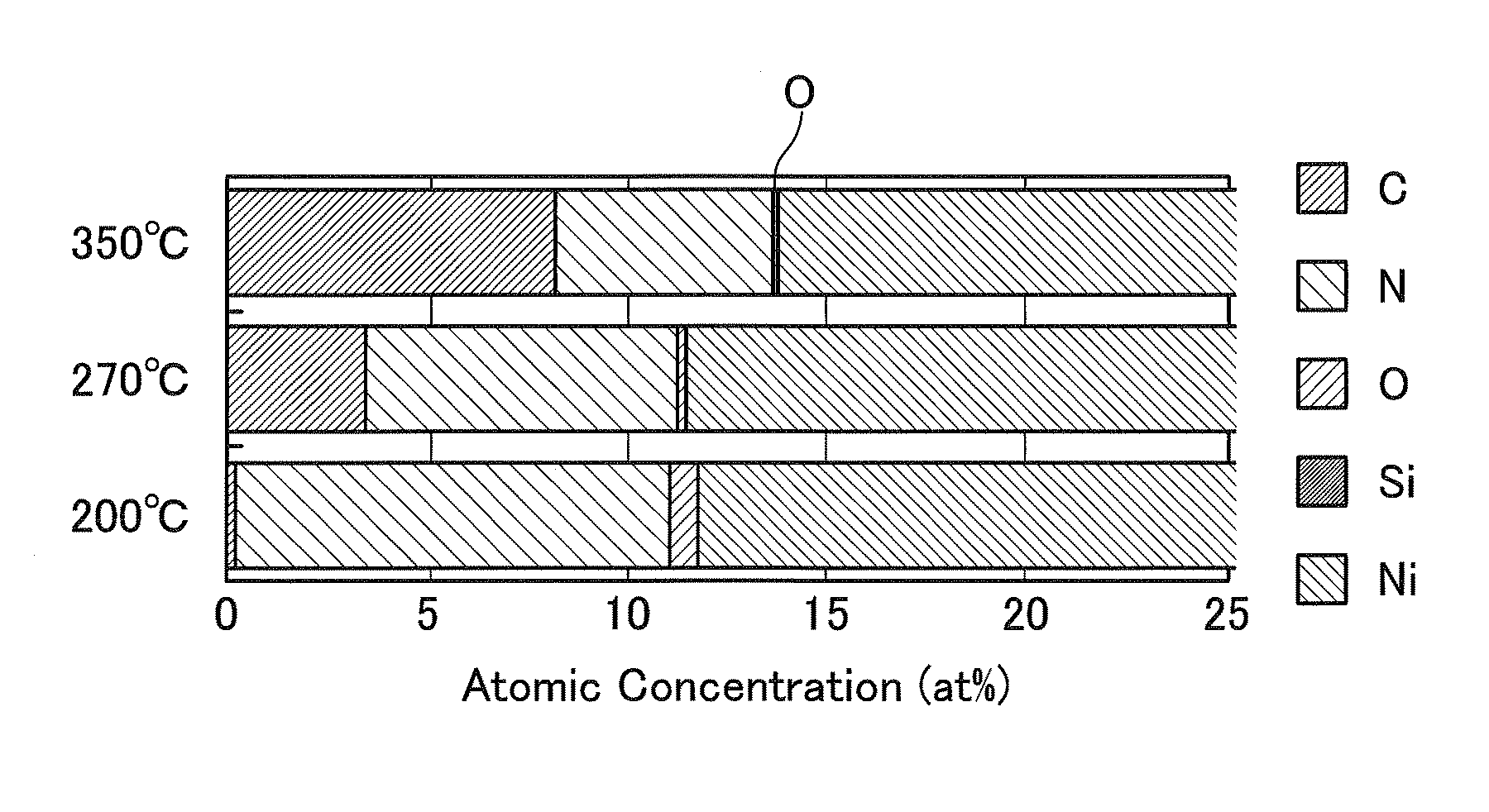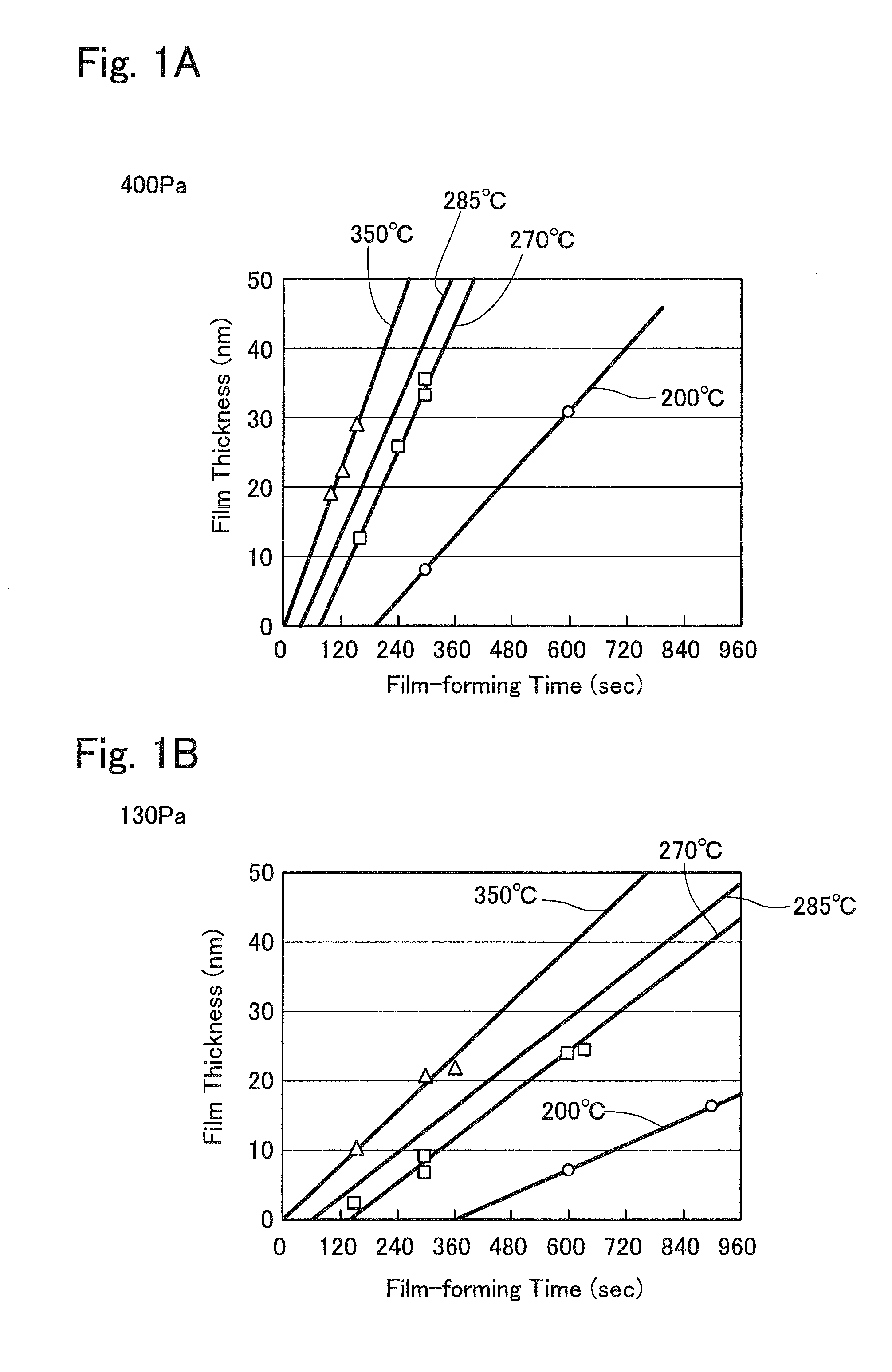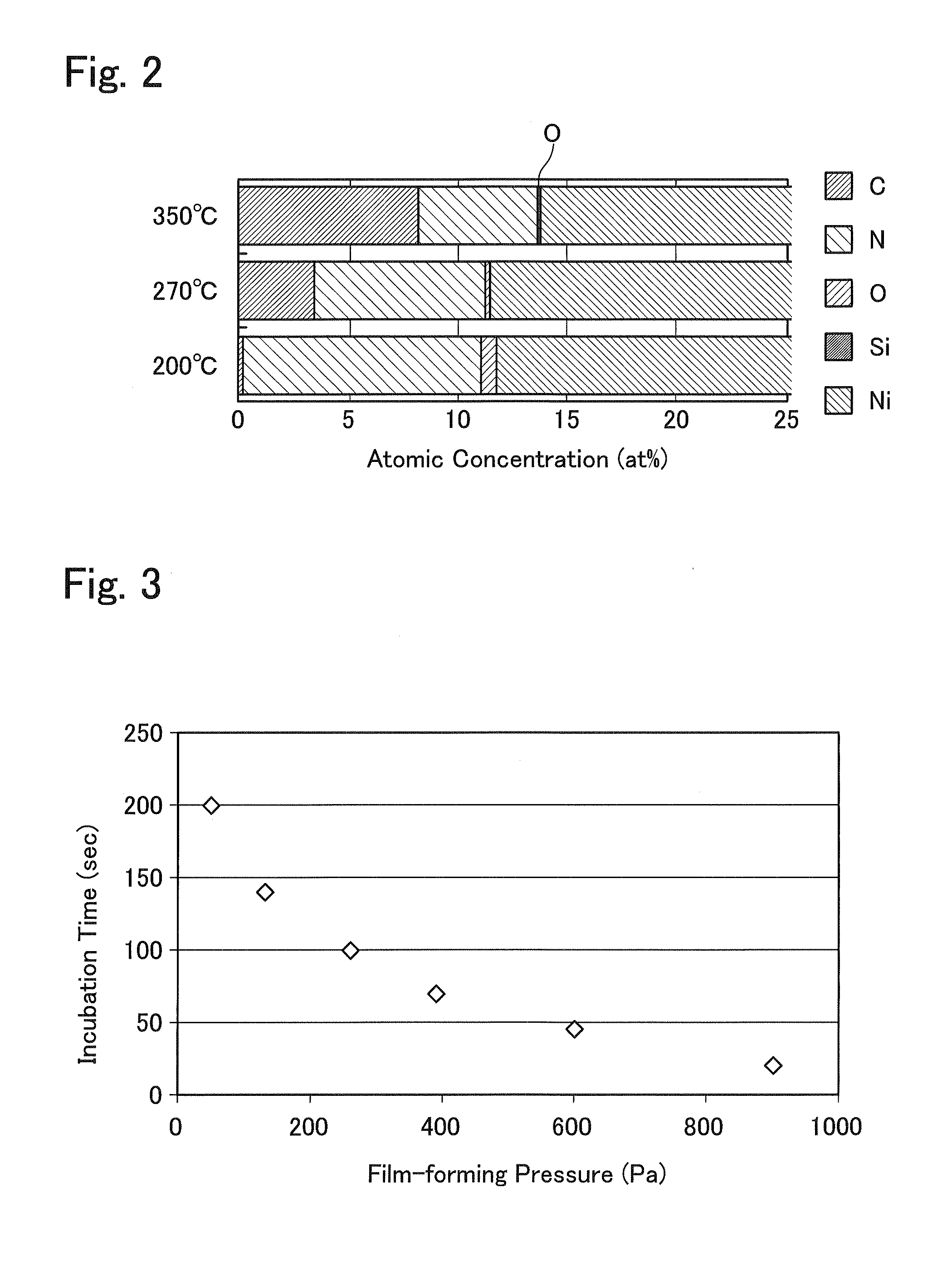Method for forming Ni film
a technology of ni film and ni nuclei, which is applied in the direction of coating, chemical vapor deposition coating, metallic material coating process, etc., can solve the problems that the film never permits the removal of such impurities as oxygen, and achieves the reduction of the time required for forming ni nuclei, reducing the time for nucleus forming, and controlling the growth rate of the film
- Summary
- Abstract
- Description
- Claims
- Application Information
AI Technical Summary
Benefits of technology
Problems solved by technology
Method used
Image
Examples
example 1
[0044]In this example, an Ni film was formed according to the CVD technique by supplying a nickel alkylamidinate: Ni ((tert-Bu)2-amd)2 (a compound represented by the foregoing general formula (I), in which R is a methyl group (Me); and Bu represents a butyl group) (a product available from Rohm and Haas Company) onto the surface of an Si substrate having a diameter φ of 300 mm, from which the oxide or natural oxide formed on the surface of the substrate through the natural oxidation had been removed, in a constant flow rate, while using, as reducing gases, 200 sccm or 150 sccm of H2 gas and 200 sccm or 150 sccm of NH3 gas and setting the film-forming pressure at a level of 130 Pa or 400 Pa and setting the film-forming temperature (the substrate temperature) at a level of 200° C., 270° C., 285° C. or 350° C.
[0045]In this respect, the Ni films thus formed was inspected for the relation between the film-forming time (second; sec) and the thickness (nm) of the resulting film and the res...
example 2
[0048]In this Example, the nickel alkylamidinate disclosed in Example 1 was used under the same conditions, and the same procedures used in Example 1 were repeated by using H2 gas and NH3 gas as reducing gases in amounts of 200 sccm and 200 sccm, or 150 sccm and 150 sccm; setting the film-forming pressure at 400 Pa; and setting the substrate temperature at 200° C., 270° C., 285° C. or 350° C. to thus form each corresponding Ni film. Each of the resulting films was inspected and evaluated for the concentrations of atomic components included in the resulting Ni film, according to the SIMS technique.
[0049]The results thus obtained are shown in FIG. 2. More specifically, FIG. 2 shows the concentrations (at %) of atomic components present in the Ni films produced at the foregoing respective temperatures, while using the H2 gas and the NH3 gas in amounts of 200 sccm and 200 sccm respectively. From the results shown in FIG. 2, it could be recognized that the nitrogen concentration is reduc...
example 3
[0052]In this Example, the nickel alkylamidinate disclosed in Example 1 was used under the same conditions, and the same procedures used in Example 1 were repeated by using H2 gas and NH3 gas as reducing gases in amounts of 200 sccm and 200 sccm, or 150 sccm and 150 sccm, respectively; setting the substrate temperature at 285° C.; and changing the film-forming pressure so that it falls within the range of from about 50 Pa to about 900 Pa to thus form each corresponding Ni film.
[0053]The resulting films were inspected or evaluated for the relation between the film-forming pressure and the incubation time (second; sec), wherein the films were those produced using the H2 gas and the NH3 gas each in an amount (flow rate) of 200 sccm and the substrate temperature of 285° C. and the results thus obtained are plotted on FIG. 3.
[0054]As will be seen from the data plotted on FIG. 3, the incubation time is decreased as the film-forming pressure increases. It would be assumed that such a resul...
PUM
| Property | Measurement | Unit |
|---|---|---|
| temperature | aaaaa | aaaaa |
| temperature | aaaaa | aaaaa |
| pressure | aaaaa | aaaaa |
Abstract
Description
Claims
Application Information
 Login to View More
Login to View More - R&D
- Intellectual Property
- Life Sciences
- Materials
- Tech Scout
- Unparalleled Data Quality
- Higher Quality Content
- 60% Fewer Hallucinations
Browse by: Latest US Patents, China's latest patents, Technical Efficacy Thesaurus, Application Domain, Technology Topic, Popular Technical Reports.
© 2025 PatSnap. All rights reserved.Legal|Privacy policy|Modern Slavery Act Transparency Statement|Sitemap|About US| Contact US: help@patsnap.com



